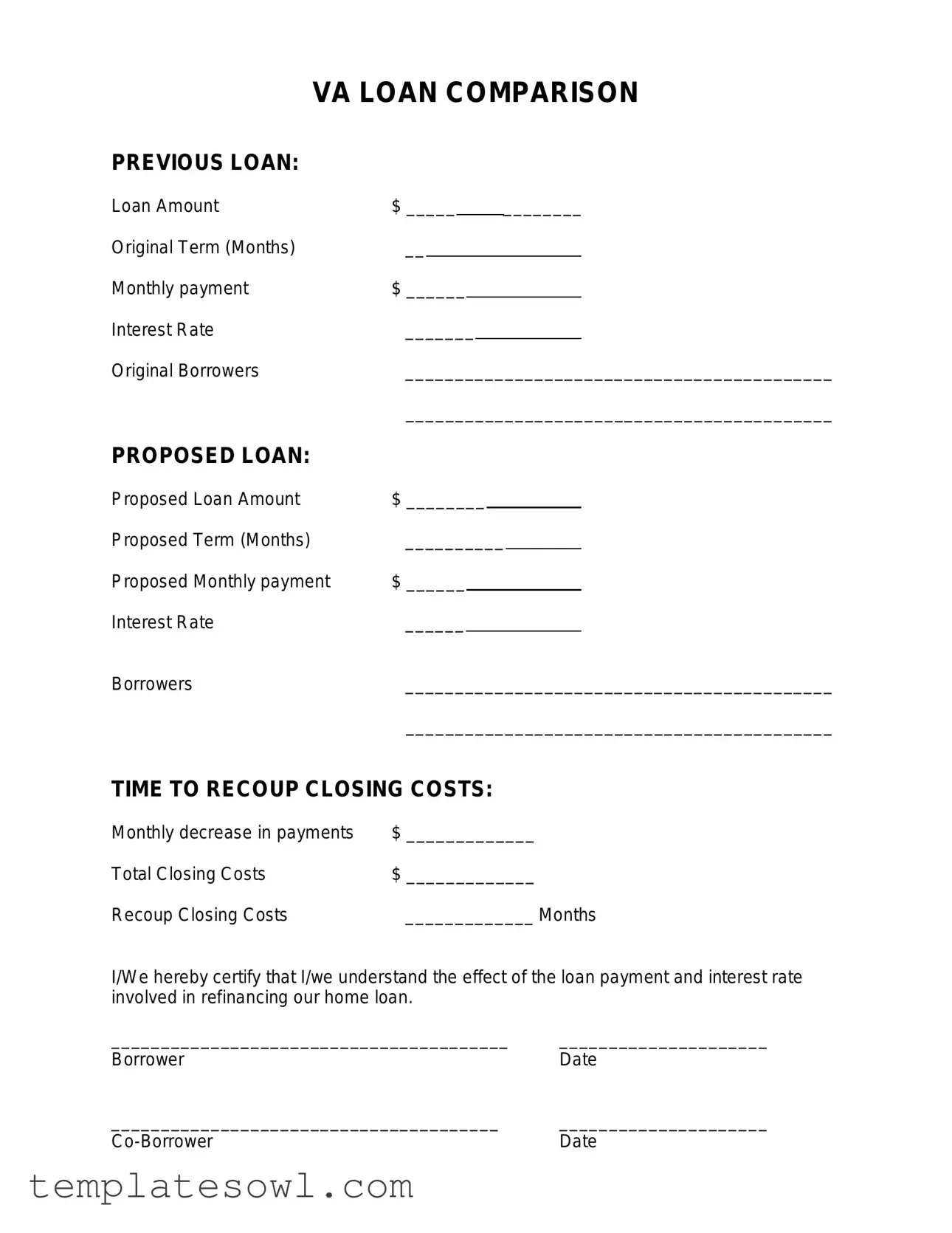What is the purpose of the Worksheet form?
The Worksheet form is designed to help individuals evaluate the financial implications of refinancing their home loan. By filling out this form, borrowers can compare their current loan details with those of a proposed loan. This includes analyzing loan amounts, terms, monthly payments, and interest rates, which ultimately assists them in making informed decisions about refinancing.
What information do I need to provide for my previous loan?
To complete the Worksheet for your previous loan, you will need to provide details such as the loan amount, original term in months, monthly payment, interest rate, and the names of the original borrowers. This information serves as a baseline for comparison with the proposed loan, helping to clarify your current financial situation.
What should I include when describing the proposed loan?
When outlining the proposed loan, you will include the proposed loan amount, term in months, proposed monthly payment, interest rate, and the names of the new borrowers if applicable. It’s important to ensure that these figures are as accurate as possible, as they will directly impact your comparison analysis.
How can I calculate the time to recoup closing costs?
The time to recoup closing costs can be determined by taking the monthly decrease in payments and dividing it into the total closing costs. The Worksheet form provides spaces for you to input these figures. By doing this calculation, borrowers can understand how long it will take them to recover any costs associated with refinancing their home loan.
What does the certification statement at the end of the Worksheet mean?
The certification statement at the bottom of the Worksheet is an acknowledgment by the borrowers that they understand the implications of the loan payment and interest rate involved in their refinancing decision. By signing and dating this section, borrowers agree that they have reviewed the information and are aware of the financial consequences of their refinancing choice.
Is it necessary to complete this Worksheet before refinancing?
While it is not legally required to complete this Worksheet before refinancing, it is highly recommended. This tool aids in assessing the pros and cons of the refinancing process, allowing borrowers to make educated decisions based on their financial circumstances. Taking the time to fill out the Worksheet can ultimately lead to better financial outcomes.
